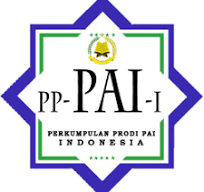IMPLEMENTASI METODE PEMBELAJARAN KOOPERATIF TIPE GROUP INVESTIGATION (GI) DALAM MENINGKATKAN KOMPETENSI PENDIDIKAN AGAMA BUDI PEKERTI PADA SISWA KELAS VII SMP MANBAUL ULUM BONDOWOSO
DOI:
https://doi.org/10.54069/attaqwa.v19i2.272Keywords:
co-operative learning; group investigation; competenceAbstract
One of the learning methods that involve students' participation is the co-operative learning method. In the cooperative learning method, the emphasis is more on the learning process in the group rather than doing something together with the group.. The objectives of this study were to improve: (1) overall student activeness of students in class VII of SMP Manbaul Ulum Bondowoso in the 2022/2023 academic year, (2) learning outcomes of students in class VII of SMP Manbaul Ulum Bondowoso. The methodology of this research is classroom action research. The research subjects were the seventh grade students of Manbaul Ulum Bondowoso Junior High School in the 2022/2023 academic year, a total of 40 students. Data collection techniques in this study were carried out through activities such as: (a) observation of student activeness during learning activities; (b) interviews with students; (c) daily tests. The procedure for implementing the action includes: (a) action planning; (b) action implementation; (c) observation; (d) analysis and reflection. The results of the study have increased when compared to before the application of the GI method, namely in the aspect of enthusiasm in KBM in cycle I, namely indicator BS = 5%; B = 70%; C = 22.5%; K = 2.5% and in cycle II indicator BS = 17.5%; B = 67.5%; C = 15%. The measurement of the cooperation aspect between students has increased, namely in cycle I indicator B = 22.5%; C = 70%; K = 7.5% and in cycle II indicator BS = 2.5%; B = 32.5%; C = 60%; K = 5%. Measurement of aspects of expressing opinions to solve problems has increased, namely in cycle I indicator B = 20%; C = 47.5%; K = 32.5% and in cycle II indicator BS = 7.5%; B = 22.5%; C = 57.5%; K = 12.5%. Measurement of the aspect of asking questions also increased, namely in cycle I the indicator BS = 2.5%; B = 5%; C = 67.5%; K = 15% and in cycle II the indicator BS = 7.5%; B = 22.5%; C = 57.5%; K = 12.5%. The average daily test of students in cycle II also increased by 1.05 (cycle I = 6.31; cycle II = 7.36). So it can be concluded that the Group Investigation cooperative learning method can improve student activeness and student learning outcomes.
Downloads
References
Arends, R.I. 1997. Classroom Instruction and Management. New Jersey: The Mc.Graw Hill Companies, Inc.
Astuti, Sri Susi Wiji, Sarjono Sarjono, and Ahmad Hariyadi. “Penerapan Model Pemebelajaran Grup Ivestigation Untuk Meningkatkan Aktivitas Dan Hasil Belajar IPS Siswa Kelas VII SMPN 1 Senori Tahun Pelajaran 2019/2020.” Aksara: Jurnal Ilmu Pendidikan Nonformal 7, no. 1 (2021): 37. https://doi.org/10.37905/aksara.7.1.37-42.2021.
Hariawan, I Ketut. “Penerapan Model Pembelajaran Grup Investigation (GI) Berbantuan Vidio Pembelajaran Untuk Meningkatkan Hasil Belajar IPA.” Cetta: Jurnal Ilmu Pendidikan 3, no. 1 (2020): 1–16. https://doi.org/10.37329/cetta.v3i1.406.
Kemmis, S, and R. McTaggart. The Action Research Planner. Action Research, 1988.
Khaeriyah, Finny. “Peningkatan Hasil Belajar Ilmu Pengetahuan Sosial Melalui Metode Cooperative Learning Teknik Grup Investigasi.” Jurnal Pendidikan Dasar 7, no. 2 (2016): 209–24.
Krismelinda, Widya Andayan, Rita Hartati, Tiarnita M.S. Siregar, Imelda Malawaty Simorangkir. “PENINGKATAN KEMAMPUAN APRESIASI SASTRA SISWA SMP MELALUI MODEL INVESTIGASI KELOMPOK” 20, no. 1 (2022): 1–11.
Mamnoni. “Supervisi Akademik Kepala Madrasah Dalam Meningkatkan Pembelajaran Kelompok Pendidikan Agama Islam Di MAN 1 Lampung,” n.d.
Muhson, Nurul. “Penerapan Blended Learning Dalam Meningkatkan Hasil Belajar Pai Materi Sejarah Bani Umaiyah Kelas Viii Smpn 3 Pontianak.” Sosial Horizon: Jurnal Pendidikan Sosial 6, no. 1 (2019): 12–25. https://doi.org/10.31571/sosial.v6i1.1230.
Nurhakikah, Ulfa, and Hayaturraiyan. “MENINGKATKAN HASIL BELAJAR MATEMATIKA MATERI KECEPATAN MENGGUNAKAN MODEL COOPERATIVE TIPE GRUP INVESTIGATION KELAS VB MI NW KALIJAGA.” JOURNAL OF ALIFBATA: Journal of Basic Education, 2022, 37–47.
Paul, L. A., and John Quiggin. Transformative Education. Educational Theory. Vol. 70, 2020. https://doi.org/10.1111/edth.12444.
Suwarno, Suparjo Adi. “Kinerja Kepala Madrasah Dalam Melaksanakan Fungsi Manajemen Pendidikan Di MTs Alamiriyyah Blokagung Karangdoro Tegalsari Banyuwangi” 3 (2023): 7012–29.
Widyaningsih, Oktisa, and Durinta Puspasari. “Analisis Penggunaan Model Pembelajaran Group Investigation (Investigasi Kelompok).” Jurnal Pendidikan Administrasi Perkantoran (JPAP) 9, no. 1 (2021): 77–84.
Press.Joyce, Bruce.R. (2000). Models of Teaching. Boston: Allyn and Bacon.
Kagan, Spencer. (1985). “Dimension of Cooperative Classroom Structure” dalam Slavin, R.E. Learning to Cooperate, Cooperate to Learn. 72-73. London: Plenum Press.
Kessler, Carolyn. (1992). Cooperative Language Learning: A Teacher’s Resource Book. New Jersey: Prentice Hall Regents.
Lie, Anita. (2014). Cooperative Learning: Mempraktikkan Cooperative Learning di Ruang-ruang Kelas. Jakarta: PT. Gramedia Widia Sarana Indonesia.
Roestiyah N.K (2015). Strategi Belajar Mengajar (Salah Satu Unsur Pelaksanaan Strategi Belajar Mengajar : Teknik Penyajian). Jakarta: Rineka Cipta.
Downloads
Published
How to Cite
Issue
Section
License
Copyright (c) 2023 Asia Anis Sulalah

This work is licensed under a Creative Commons Attribution-NonCommercial 4.0 International License.





